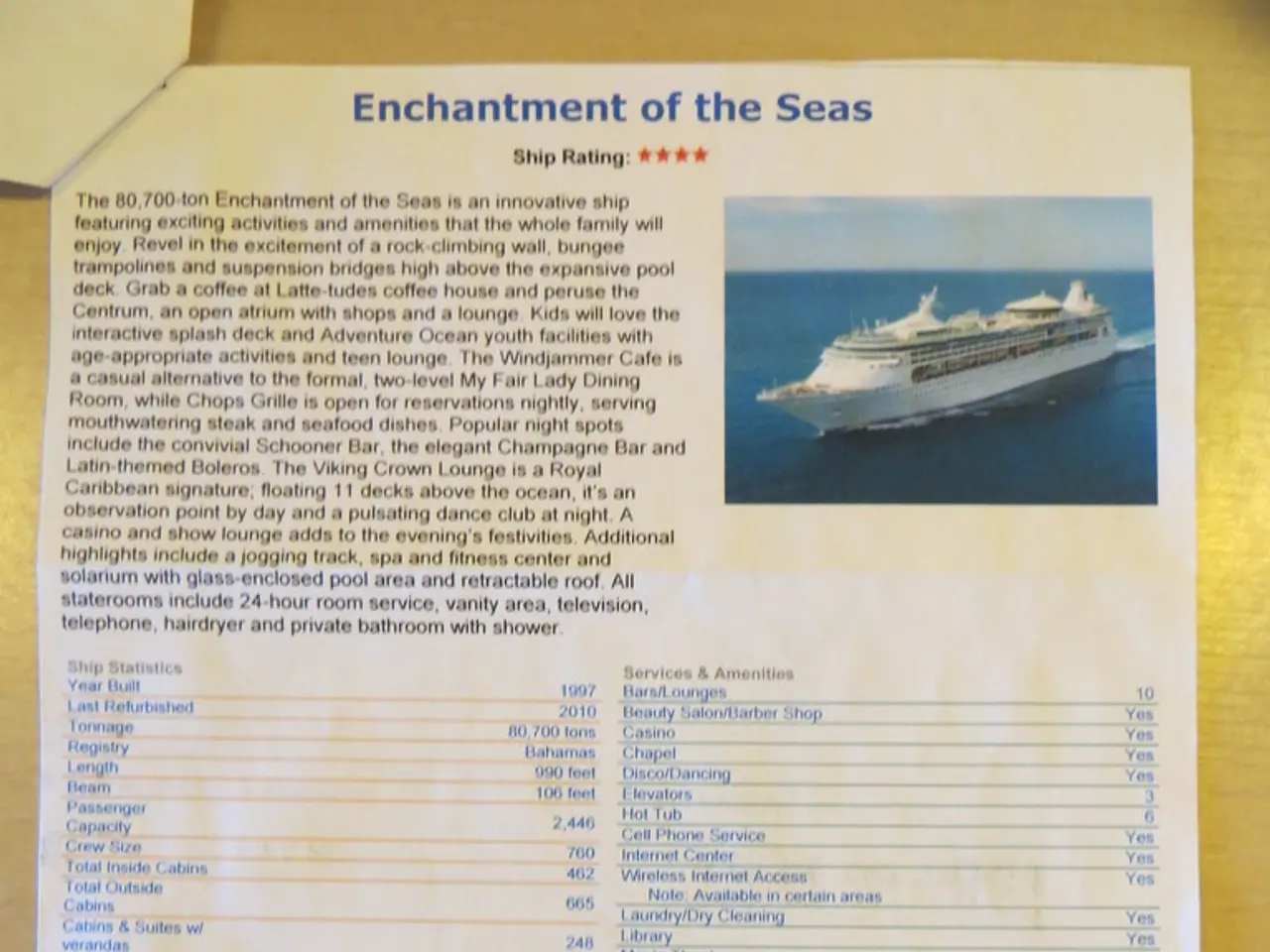Satellite Monitoring via SHARC Tagging System
The European Space Agency (ESA) is making significant strides in marine conservation, particularly in the tagging of marine species like sharks. This endeavour, however, comes with its own set of challenges, as these powerful, fast-moving animals live in dynamic and high-energy ocean environments.
Recently, an accomplished underwater photographer and antenna specialist for the ESA, Peter de Maagt, gave a presentation on satellite tagging to the Bristol Underwater Photography Group. De Maagt's presentation highlighted the ESA's commitment to marine conservation and their efforts in addressing the issue of marine litter.
The ESA's tags, designed with smaller and lower weight, longer battery life, increased memory, and bi-directional communication with the satellite, are now readily available from a Belgium-based company. These advancements in tag design help extend tagging to smaller or delicate species, overcoming the challenge of miniaturization.
One of the main solutions to the issue of tags attempting to send data when no satellite was immediately reachable is the ESA's innovative approach. The tags now send brief 'are you there?' messages until an acknowledgment from the satellite is received, ensuring data is only transmitted when possible.
The ESA's tags are not limited to sharks. They are also deployed on falcons, seals, turtles, polar bears, and albatrosses, providing valuable data for various conservation initiatives. In fact, the AIS system used by fishing vessels to identify their location can be exploited to track illegal fishing activities, with albatrosses helping to collect this data.
The protected area near Saba, marked by a dashed line on the map, is a fairly sizable one where sharks thrive. De Maagt recently joined a group of scientists in the Dutch Antilles for field studies in this area. Each biologist on the boat had a specific task assigned during the expedition, such as handling items, taking blood samples, and measuring sharks.
While satellite tagging technologies primarily focus on species monitoring and fisheries management, they can also be adapted for marine litter tracking. These systems, combined with AI and integrated data sources, can detect debris accumulation patterns over large ocean regions, offering new possibilities for protecting ocean biodiversity and enforcing marine laws.
Despite these advancements, satellite tagging is not without impact on the animals being tagged. It requires increased memory and extended battery life, and achieving durable attachment on species like sharks and stingrays, which share similar challenges, can be difficult due to strong currents and active movement.
Sadly, sharks are being hard hit, with over 100,000,000 sharks having their fins cruelly amputated every year to make bland soup for foreign markets. However, the data collected from these tags is crucial in understanding shark behaviour and migration patterns, contributing to their conservation efforts.
Recent field studies in the protected area near Saba have seen the successful deployment of ESA's satellite tags on sharks. De Maagt shared an image of data from a tag that was deployed and returned to the surface in the Gulf of Mexico, offering a glimpse into the wealth of information these tags can provide.
With only 1,681 tags deployed on sharks between 2002-2017, and most of the data being collected on commercially important or highly charismatic species like great whites or tiger sharks, there is still much to be learned about these fascinating creatures. The ESA's SHARC technology is designed to support conservation initiatives with real data, offering hope for a brighter future for sharks and the ocean ecosystems they inhabit.
- Peter de Maagt, an expert in underwater photography and antenna specialist for the ESA, delivered a tutorial on satellite tagging to the Bristol Underwater Photography Group.
- The tags developed by the ESA for marine species tagging are now available from a Belgium-based company and can be used on species beyond just sharks, such as falcons, seals, turtles, polar bears, and albatrosses.
- The ESA's innovative tag design helps overcome challenges in miniaturization, making it possible to tag smaller or more delicate marine species.
- In his presentation, De Maagt highlighted the ESA's commitment to marine conservation and efforts to address marine litter issues.
- De Maagt recently joined a team of scientists on a dive in the protected area near Saba, where he participated in field studies and used satellite tags to collect data on shark behavior and migration patterns.



